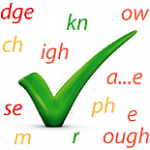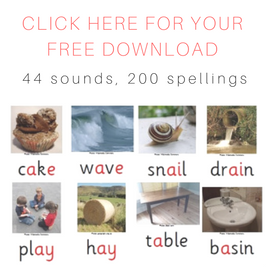Classroom programs for learners aged ~5-7
US and Irish materials tend to be less applicable than UK ones in Australia due to accent differences (Australian English has no syllable-final “r” sound)
- Anima Phonics (UK)
- Blend Phonics (US, free program)
- Code-Breakers by the Hamilton Trust (UK)
- Dandelion Launchers and Dandelion Readers and workbooks (UK)
- Doorway Into Practical Literacy (DIPL) (Aus)
- EBLI (US)
- Fitzroy Readers (Aus)
- Floppy’s Phonics (UK)
- Freereading (US, free resources)
- Get Reading Right (Aus)
- Hooked on Phonics (US)
- Horizons 1998 (US, reading program)
- Jolly Phonics (UK), also available in Australia from SPELD SA or Modern Teaching Aids, and there is a Jolly Phonics YouTube channel, and training is available from Jolly Phonics In Melbourne (Jacqui Tarquinio). Jacqui has also made videos for parents.
- LEM Phonics (Aus)
- Little Learners Love Literacy (Aus), who also run regular, affordable workshops. I’ve made a video about their books for beginners, which you can watch here, or watch their much more professional video here.
- Phonics Bug (UK), but as far as I can work out Pearson Australia only sells the Bug Club books, not other components of Phonics Bug.
- Phonics International (UK).
- PhOrMeS (Aus) is a free primary years curriculum including phonemic awareness and phonics.
- Promoting Literacy Development or PLD (Aus)
- Pocket Rockets (AUS), or a video about them is here. Should be used with strategies from Phase 2 and 3 of the free Letters and Sounds guide, and resources following the Letters and Sounds sequence, available from Smartkids. I also have a Phase 2 (free!) and Phase 3 workbook.
- Read Write Inc (UK), there is a video about this program here.
- Reading Mastery (US)
- Reading Teacher (US)
- Snappy Sounds (Aus – available May 2019)
- Sounds Good Phonics (Ireland), sold internationally by Gill Education
- Sounds Together (UK)
- Sounds~Write (UK), training and resources also available in Australia, here’s a video from the 2015 Melbourne Sounds~Write training.
- Spalding (US), click here for Australian supplier
- Wilson Reading Program (US)
- Zoo Phonics (US)
Also, US Professor Janice Light has designed a literacy curriculum for learners who use Augmentative and Alternative Communication, so if your students have significant disabilities this looks well worth investigating.



I am a Primary Teacher in my 52nd year of teaching, working part-time as a Classroom Teacher Assistant, withdrawing the most needy Year 1 and 2 students, using strategies learnt in the training course of http://www.readingsimplified.com and using your letters!
Wow, Anna, an amazing teaching innings, your students are very lucky to have you! Alison
I have found the online Australian program ‘Sound Waves’ to be very good. Have you seen it?
Yes, I have it (the publisher gave me a copy of the whole thing a few years ago, wow), so I show it to people and link to it from my website, but it’s a spelling program rather than integrating reading and spelling seamlessly as reciprocal processes, which is a better approach than teaching spelling and reading as though they are separate things. I understand they are doing, or have done, a rewrite of the Foundation level so that might address this problem, but as yet I haven’t had a chance this summer to take a closer look. If they can include a proper synthetic phonics teaching sequence that reflects or includes decodable books that will be excellent. All the best, Alison
oh me too, I have found the online Indonesian too. Have you seen it ?
I don’t speak Bahasa (Sadly. My sisters both do, but it wasn’t offered at our school the year I had to choose a language) so I haven’t been looking for Indonesian things, and haven’t seen anything on how to teach phonics in Bahasa, I guess that’s what you mean.
[…] For information on books buy check the Spelfabet website: Here […]
[…] For information on books buy check the Spelfabet website: Here […]
[…] For information on books buy check the Spelfabet website: Here […]
Hi Alison, Do you have any suggestions for older students who struggle with spelling, rather than reading? I would love to find a placement test to see where they may need to work on and then target that area. I hoped SPELD may have a free one.
Hi Jo, I think most spelling/phonics programs/teaching sequences have informal, nonstandardised placement tests you could use, see for example https://www.phonicbooks.co.uk/advice-and-resources/advice-and-resources-for-teachers/where-to-start/ (but use it as a spelling test not just a reading one), or you could try my free low frequency word spelling test: https://www.spelfabet.com.au/materials/low-frequency-spelling-test. I have videos for each level on Youtube https://www.youtube.com/watch?v=JJgLJ7MlsM0&list=PLPRCsGiF_tQs8LOfvXtqzcinf7-hj7G7h&index=10&t=8s. I don’t know of a free test from SPELD but there are also some free tests on the MOTIF website https://www.motif.org.au/. Hope you find something useful out of that! Alison